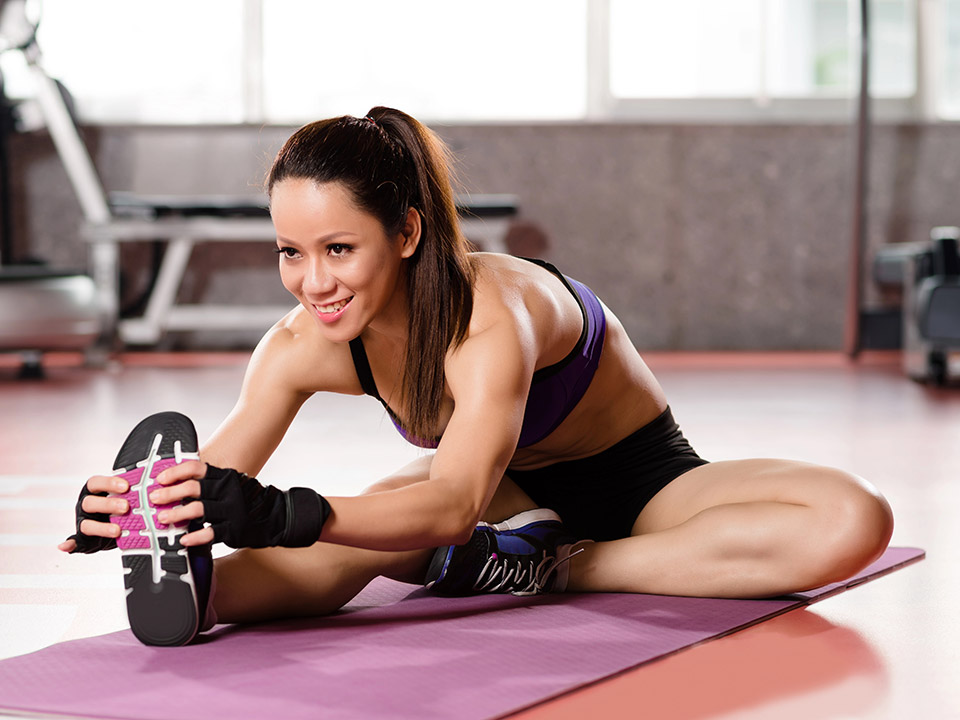Stretching is an essential component of any fitness routine, yet it is often overlooked or rushed through. Many people believe that stretching is only necessary for athletes or those with injuries, but the truth is that everyone can benefit from incorporating stretching into their fitness routine. In this blog post, we will discuss the importance of stretching, the different types of stretching, and how to incorporate stretching into your fitness routine.
Why is stretching important?
Stretching has numerous benefits for both the body and mind. It helps to improve flexibility, range of motion, and posture. It also increases blood flow to the muscles, which can help prevent injuries and reduce muscle soreness. Additionally, stretching can help reduce stress and tension in the body, promote relaxation, and improve overall well-being.
Types of stretching:
There are several types of stretching, each with its own benefits. The most common types of stretching include static stretching, dynamic stretching, and proprioceptive neuromuscular facilitation (PNF) stretching.
- Static stretching involves holding a stretch for a certain amount of time, usually 30 seconds to a minute. This type of stretching is great for improving flexibility and it can be done before or after a workout.
- Dynamic stretching involves moving the body through a range of motion, such as arm circles or leg swings. This type of stretching is best done before a workout to warm up the muscles and prepare them for exercise.
- PNF stretching involves a combination of stretching and contracting the muscles. It is often done with a partner and is great for improving flexibility and range of motion.
How to incorporate stretching into your fitness routine
Now that we understand the importance of stretching and the different types, let’s discuss how to incorporate stretching into your fitness routine.
1. Warm-up with dynamic stretching:
Before starting your workout, it is important to warm up your muscles with dynamic stretching. This will help to increase blood flow and prepare your muscles for exercise. Some dynamic stretches you can incorporate into your warm-up include arm circles, leg swings, and torso twists.
2. Stretch after your workout:
After your workout, your muscles are warm and more pliable, making it the perfect time to stretch. This will help to improve flexibility and reduce muscle soreness. Be sure to hold each stretch for 30 seconds to a minute to get the full benefits.
3. Stretch on rest days:
On days when you are not working out, it is still important to stretch. This will help to maintain flexibility and prevent muscle tightness. You can do a full-body stretching routine or focus on specific areas that feel tight or sore.
4. Incorporate yoga or Pilates:
Yoga and Pilates are great forms of exercise that also incorporate stretching. These activities not only improve flexibility but also help to build strength and improve balance. Consider adding a yoga or Pilates class to your fitness routine to get the benefits of stretching while also getting a full-body workout.
5. Use stretching as a cool-down:
After an intense workout, it is important to cool down and allow your heart rate to return to normal. This is a great time to incorporate some static stretching to help your muscles relax and recover.
6. Listen to your body:
It is important to listen to your body and not push yourself too far when stretching. You should feel a gentle stretch, but never pain. If a stretch feels uncomfortable, back off and try a different stretch or modify the stretch to make it more comfortable.
Conclusion:
Incorporating stretching into your fitness routine is essential for improving flexibility, preventing injuries, and promoting relaxation. By incorporating dynamic stretching into your warm-up, stretching after your workout, and stretching on rest days, you can reap the benefits of stretching. Additionally, incorporating yoga or Pilates and using stretching as a cool-down can also help to improve flexibility and overall fitness. Remember to listen to your body and never push yourself too far when stretching. With these tips, you can easily incorporate stretching into your fitness routine and improve your overall health and well-being.

